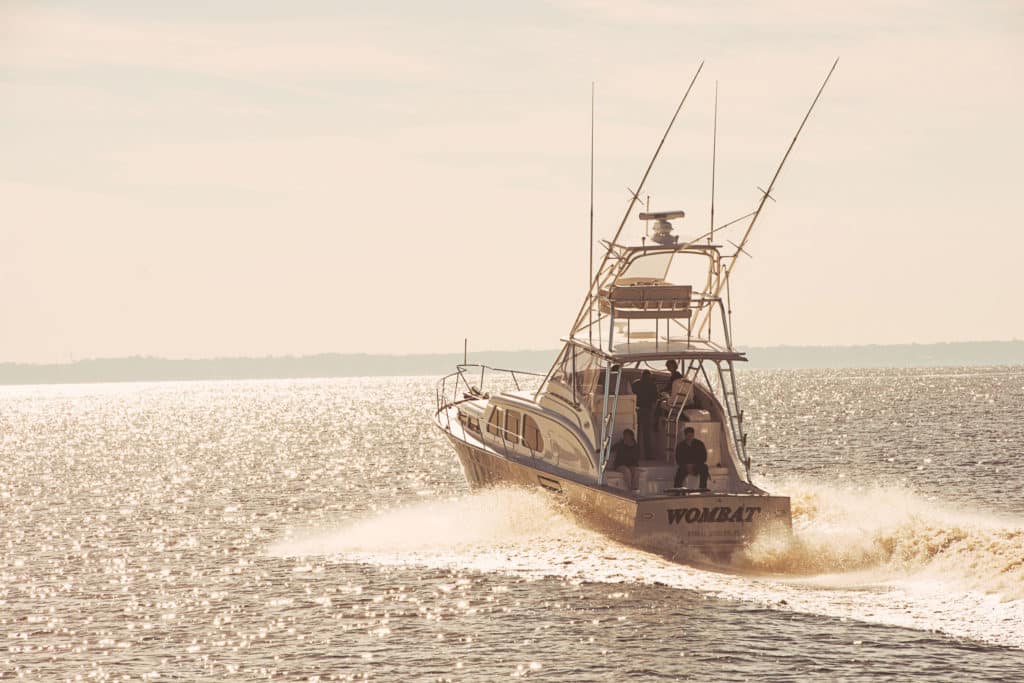
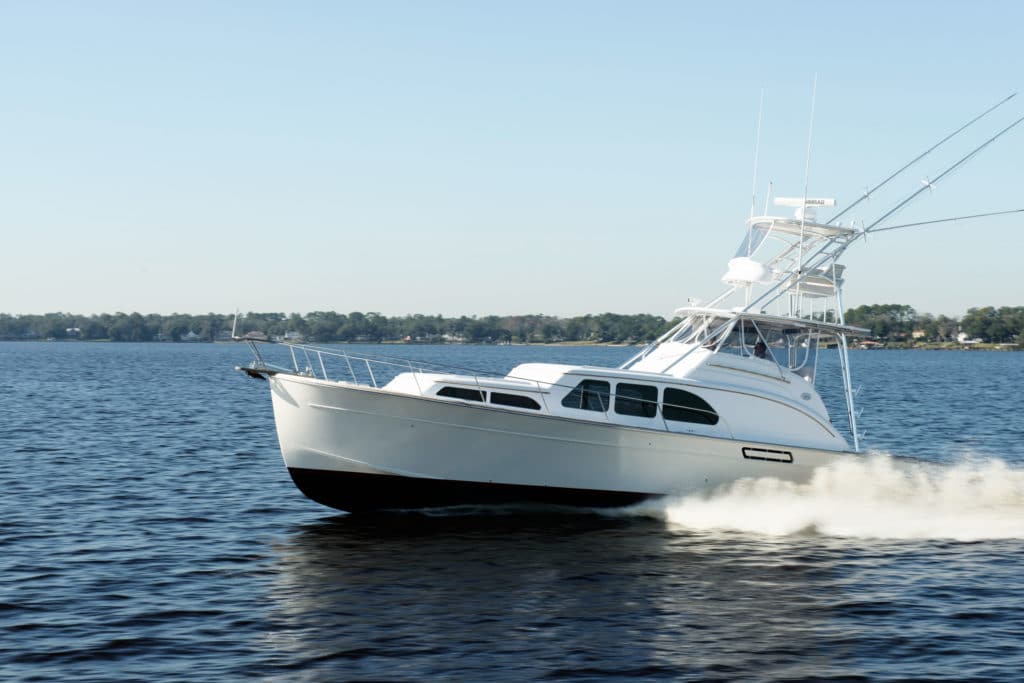
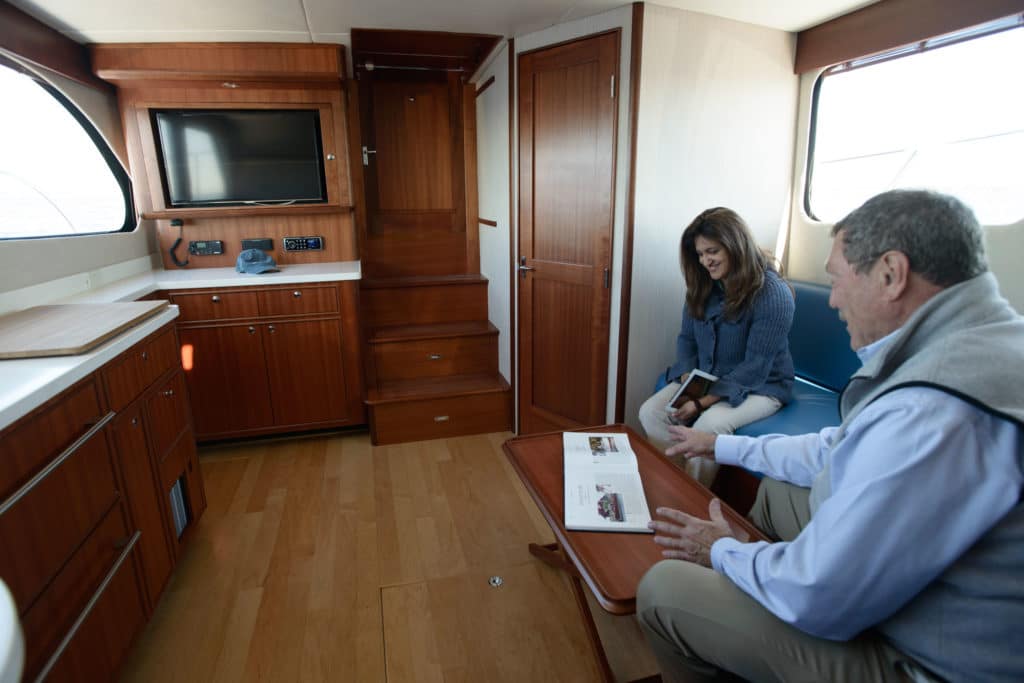
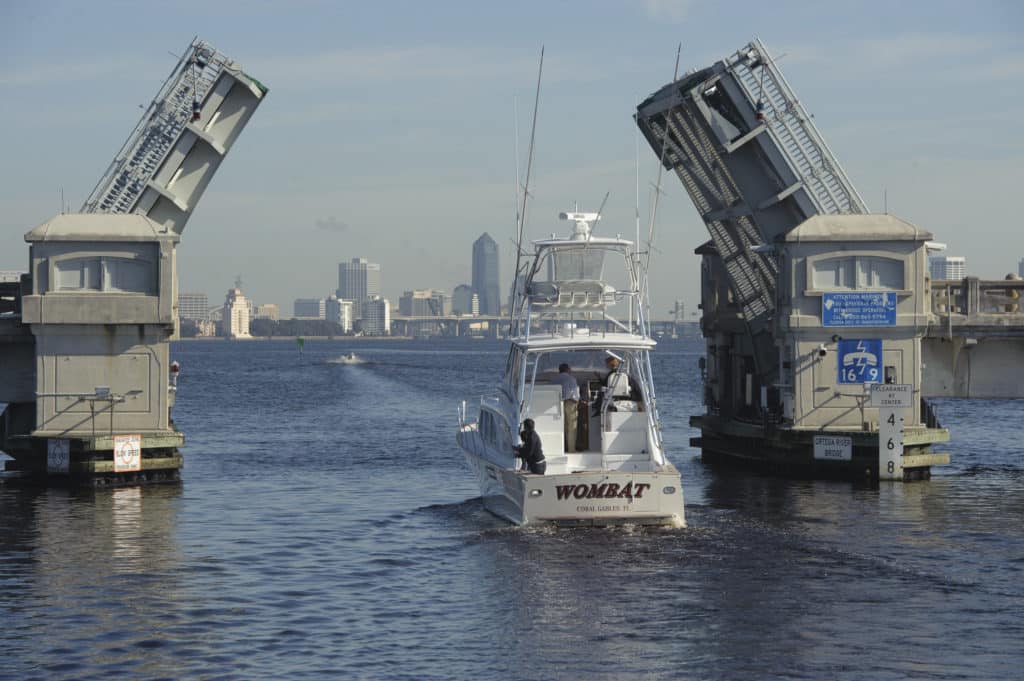
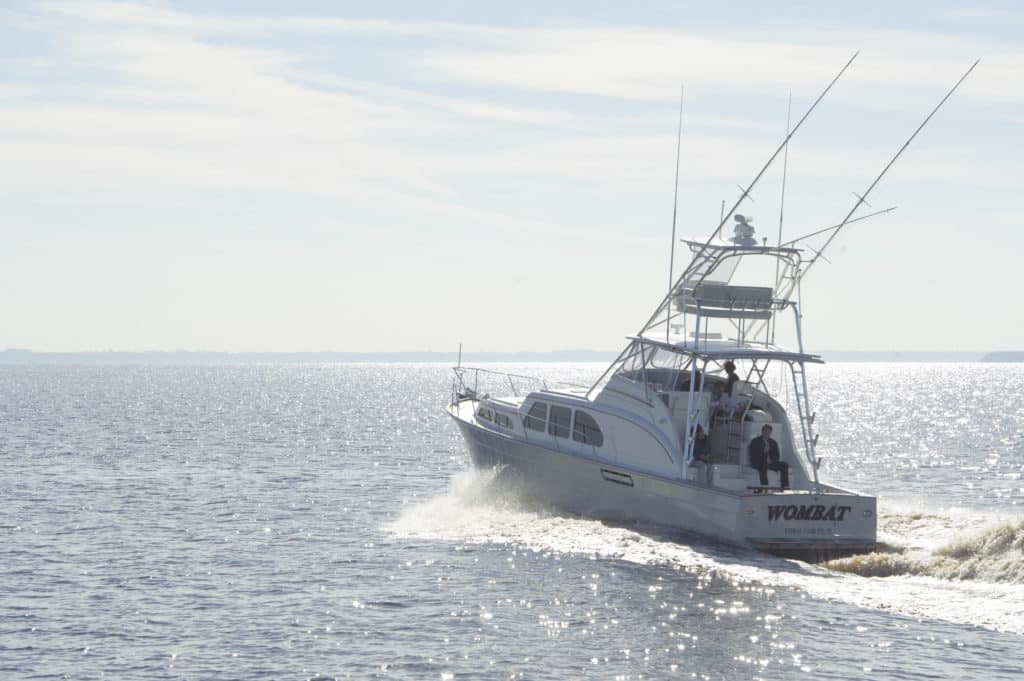
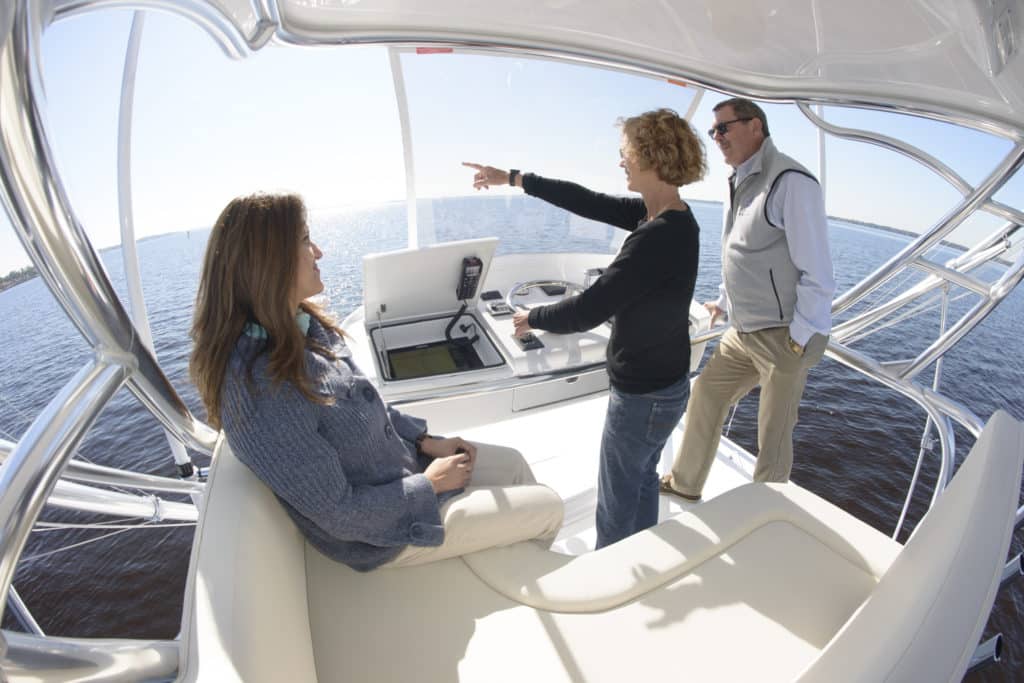
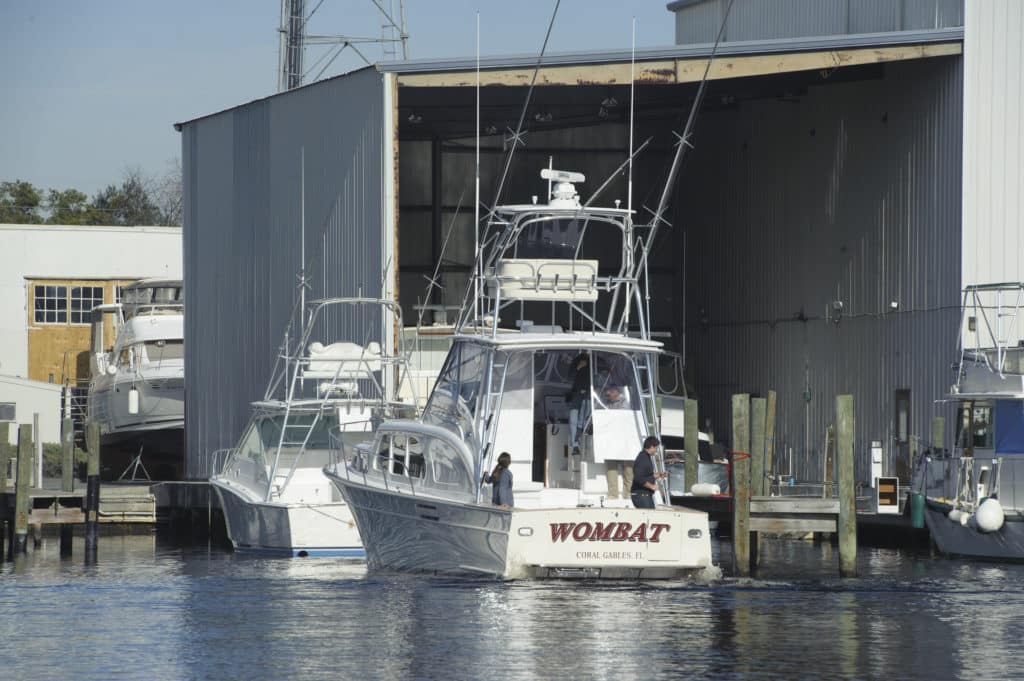
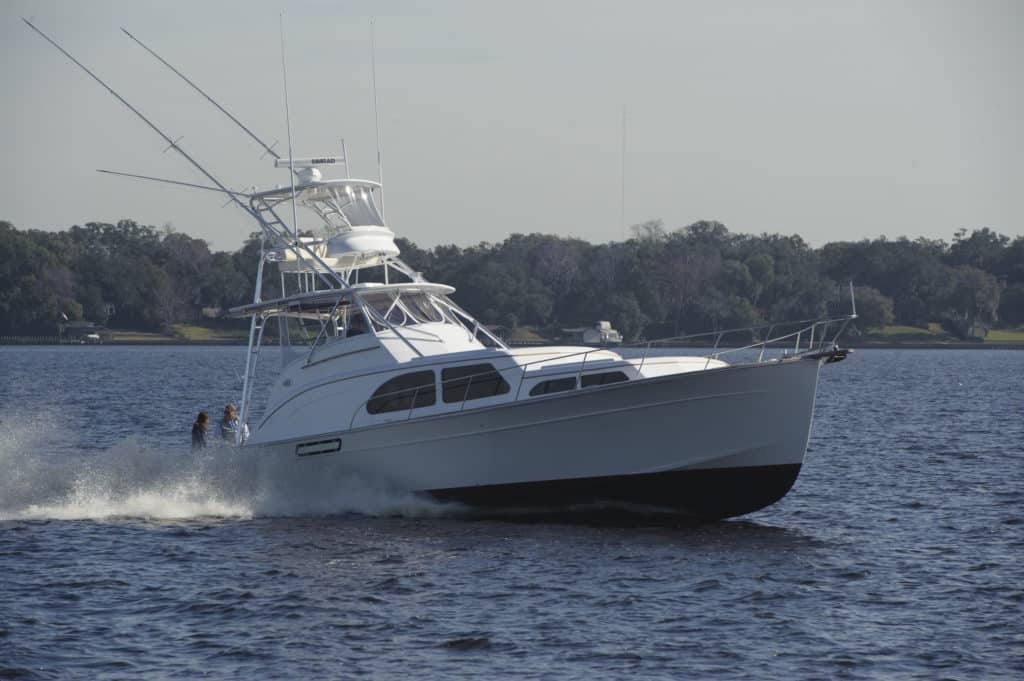
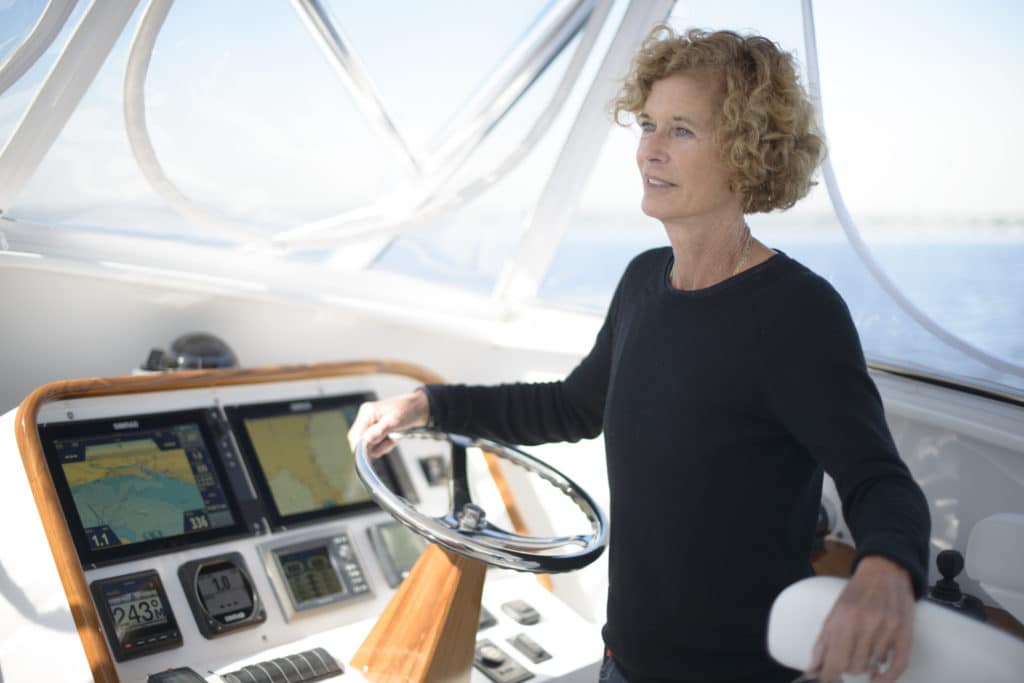
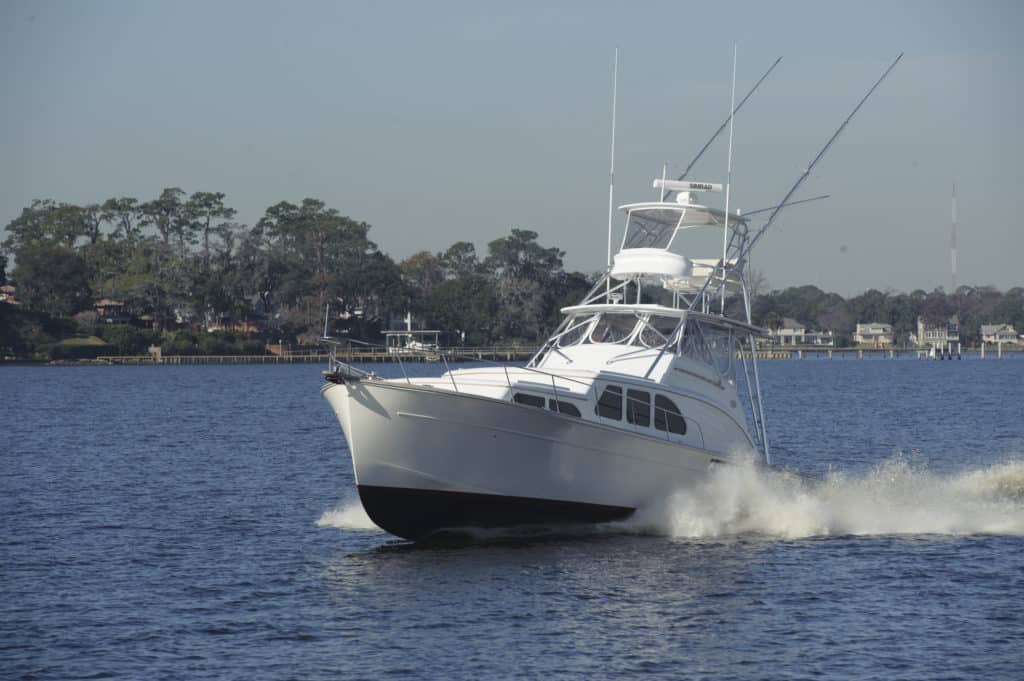
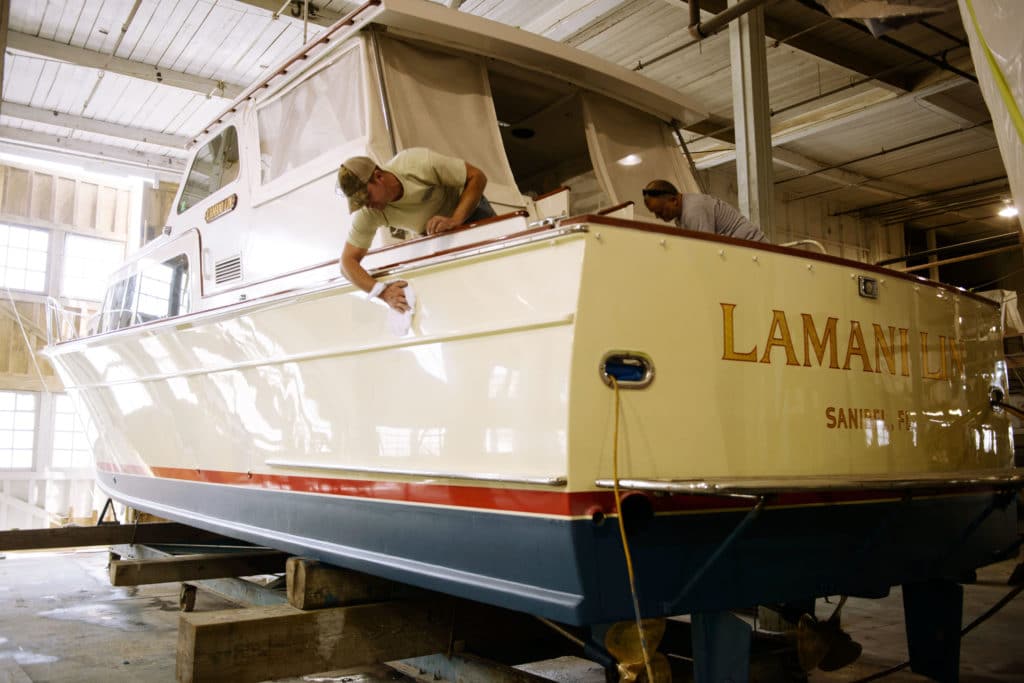
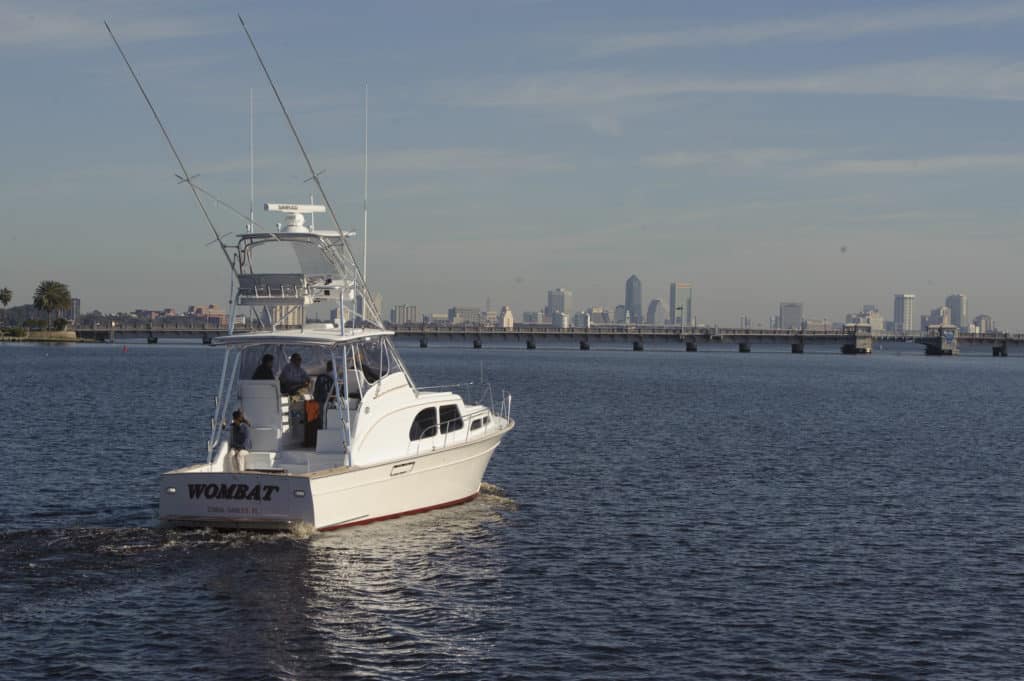
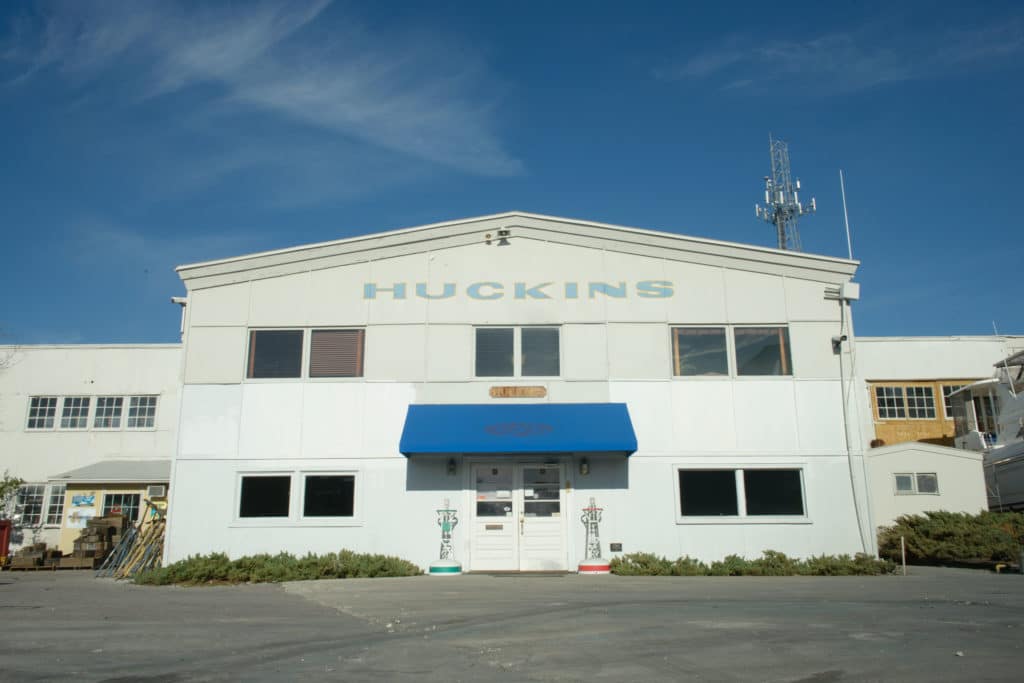
As she had done hundreds, perhaps thousands, of times before, Cindy Purcell advanced the throttles on a custom-built Huckins, this one the new 45 Sportfisherman called Wombat. The 45 SF, built for a south Florida angler, is more than a fishing machine — far more.
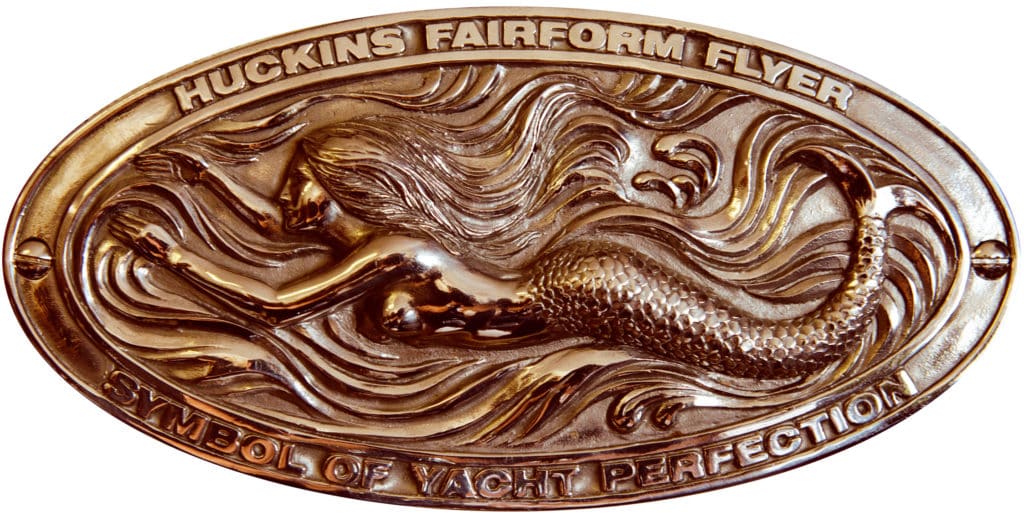
Standing beside Purcell and watching the speed-over-ground figures rise on the multifunction display as the boat came cleanly and smoothly out of the hole sans squatting, I marveled at the sense of power and acceleration delivered by twin 480-horsepower Cummins diesels. We were gliding over a light wind chop on the St. Johns River near Jacksonville, Florida, home to one of the oldest custom boatbuilders in the United States that still produces fine yachts under its founder’s name, Frank Pembroke Huckins.
Jon Hall, Huckins’ chief designer, was also there, recording that day’s performance figures. At 17 knots, the diesels were sipping 17.6 gph, roughly a gallon a mile, a tribute to the light, strong construction techniques at the heart of every Huckins yacht. At this speed, the 415-gallon tankage produces a prodigious 351-nautical-mile cruising range with a 10 percent fuel reserve. Consumption climbed to 27.8 gph at 24 knots, and again to 33 gph at 28 knots. When Purcell pushed the throttles to their stops, the 45 SF was doing 35 knots and burning 50.5 gph.
“I like to cruise Wombat at 28 knots when the conditions allow,” Purcell said, “but with a top speed of 35 knots, some owners might like to cruise at an even 30 knots.”
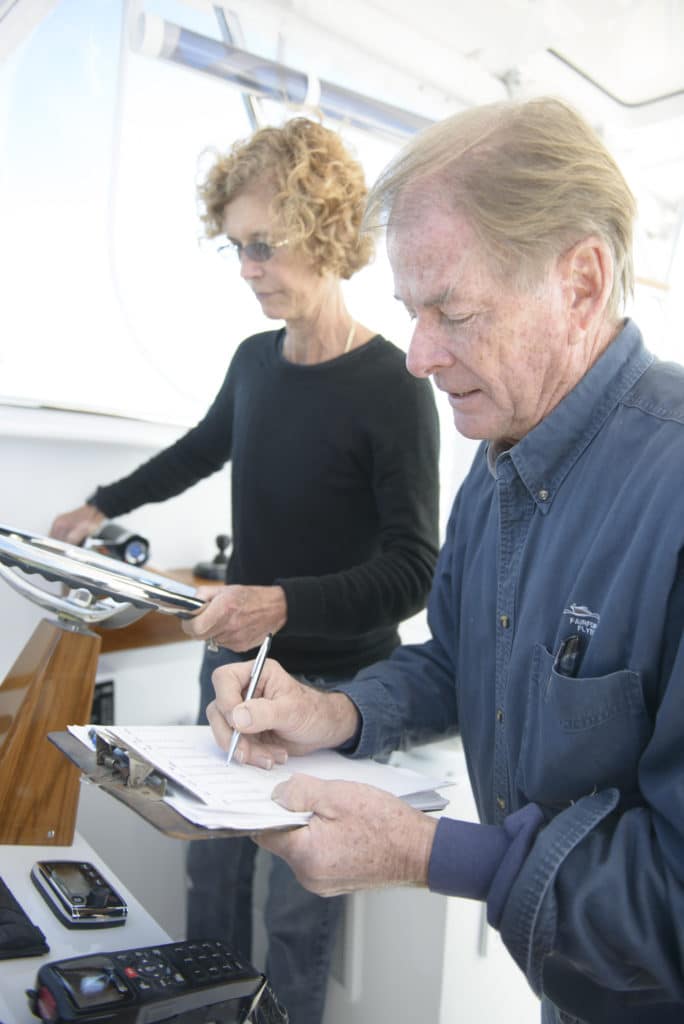
Purcell turned the stainless-steel wheel, which is mounted on a raised wooden base to make it easy for the helmsman to use, sitting high for an excellent view of the waters and weed lines that might be ahead. This yacht banked smoothly and steadily into a turn at 28 knots. We ripped through tall wakes without so much as a thump, and Purcell noted that the bottom remains true to the patented Quadraconic hull her grandfather, the company’s founder, developed in 1928. That same concept helped the PT boats Huckins built for the U.S. Navy during World War II earn the reputation as the only truly “seagoing” planing design in the fleet. During U.S. Navy sea trials, the Huckins-built PT boat exhibited 60 percent less pounding than other competitive designs. That’s enough to make a believer out of most of us, and it’s one reason why Huckins owners prize their experiences in open water.
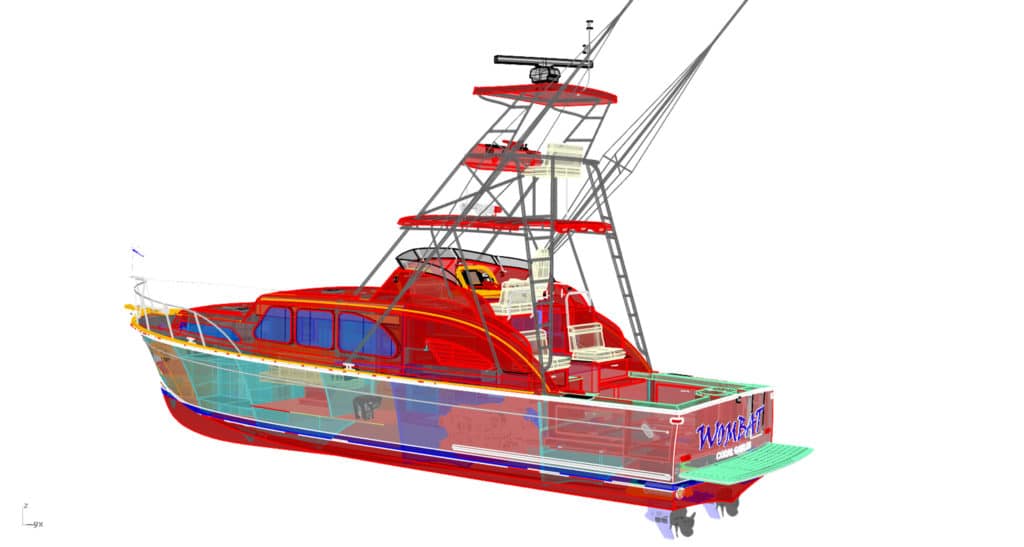
The Huckins’ Quadraconic name derives from four conical projections that make up the bottom surface shape. Seen in the slings, the 45 SF has a deep forefoot and well-developed flare above the waterline for good buoyancy and dry running. A single chine rises from the waterline and then descends quickly to optimize spray control. The deep-V shape forward warps to a flat running surface far aft for efficient planing and excellent roll resistance. You can still see the concave shapes developed by Frank Pembroke Huckins, if you look carefully. The original Huckins wooden hulls had triple-planked bottoms, which gave way to double-diagonally planked Philippine mahogany hulls. Huckins was an early adopter of cold-molded hulls.
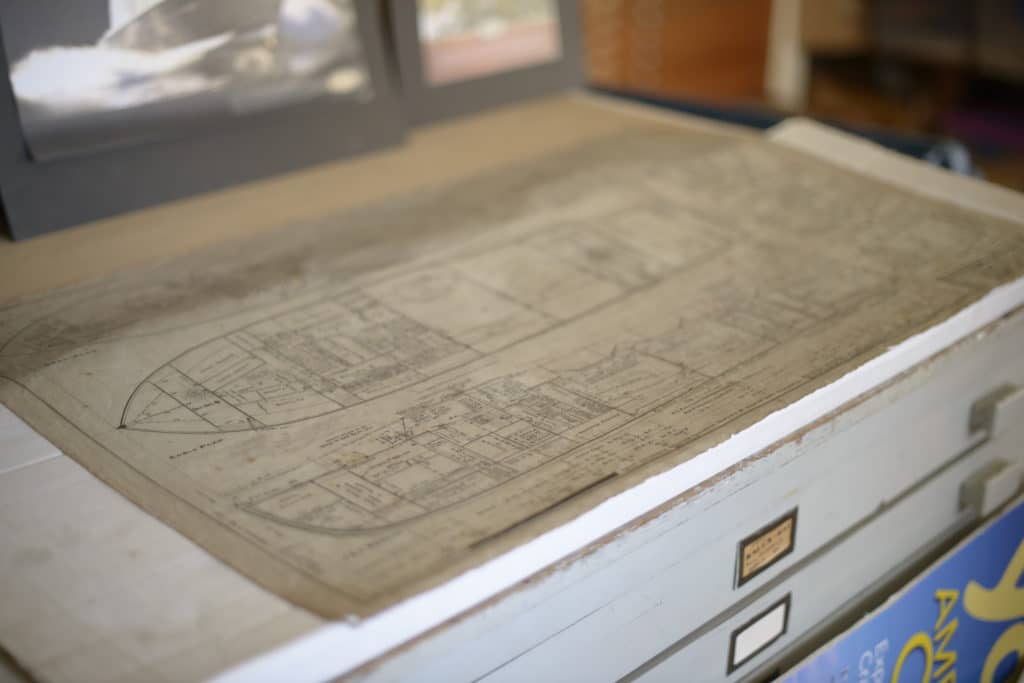
Later in the day, I joined Purcell in the upper control station of the Palm Beach-fabricated tower, notable for its smooth, precise welds and outstanding finish. Even from that lofty viewpoint, where I dreamed of peering off to the horizon in search of birds marking fish, the sense of solid build and control was outstanding.
“We have decades of experience building cruising and sport-fishing designs that handle the way they should,” Purcell said, “and because we are precise about construction, we’ve always had an edge when it comes to fuel economy.”
The Quadraconic hull of Huckins’ design pounded 60 percent less than its competitors
during U.S. Navy sea trials for PT boat builders.
Those decades of careful craftsmanship are also obvious in Wombat‘s combination of comfort and fishability. The owner had loads of influence in the choice and placement of cockpit features. He specified three flush-deck insulated fish bins with macerators in their drains, a Dometic ice makerto keep the catch chilled, two 28-foot Rupp outriggers for a widespread presentation of lures, six rod holders in the gunwales for quick changes of gear, saltwater and freshwater washdowns, and a four-rod rocket launcher in lieu of a fighting chair, in keeping with his fondness for stand-up angling.
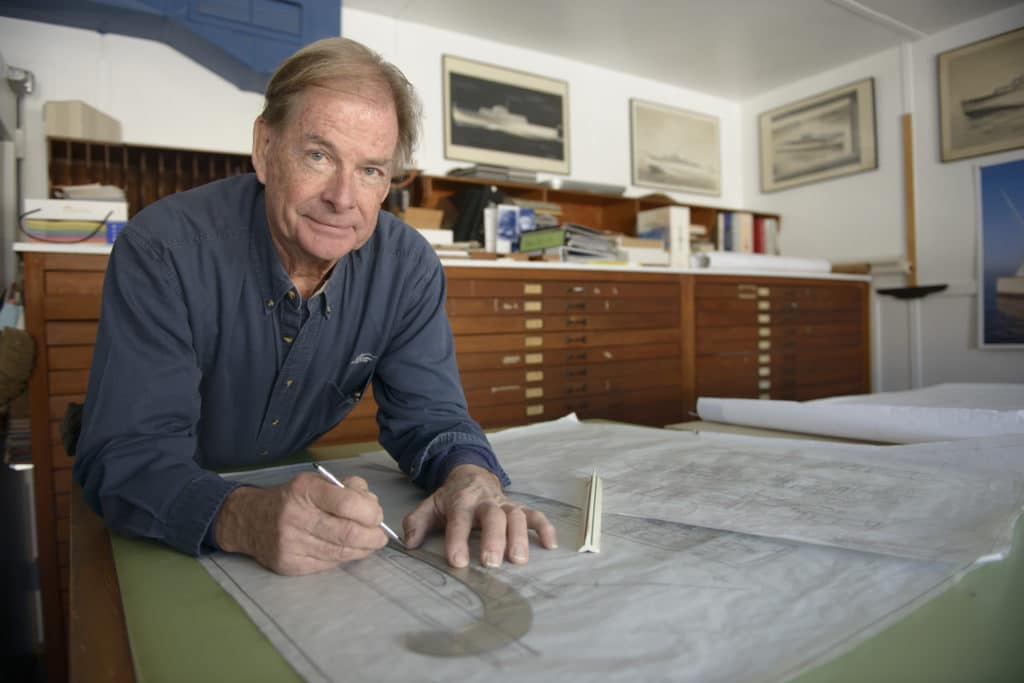
Renaissance Man: Huckins Chief Designer Jon Hall
The client wanted far more than a superb fishing platform. For his family, he wanted the most comfortable, spacious and luxurious yacht possible — which includes two 12,000 Btu Dometic air-conditioning units for the bridge. Working with Hall, the owner requested a two-stateroom, two-head layout with a well-equipped galley. It includes a Sub-Zero double-drawer refrigerator, an Indel Webasto dual top-loading freezer, a 1.5-cubic-foot convection microwave and a Kenyon Lite-Touch two-burner electric stove. Wombat‘s owners are well situated to spend enjoyable weeks at a time in the Bahamas, or anywhere else they care to cruise next.
The interior is understated, a Huckins trademark. Hand-selected, satin-finished mahogany woodwork joins sumptuous fabrics in a tastefully traditional and contemporary execution. As befits a custom builder, Huckins is willing to use teak, cherry or maple to accommodate an owner’s tastes.
| Specifications | Builder Supplied Numbers |
|---|---|
| Length Overall | 44′ 10″ |
| Beam | 13′ 9″ |
| Prop. Drive Draft | 3′ 0″ |
| Jet Drive Draft | 2′ 4″ |
| Displacement | 23,000 lbs. |
| Speed | 30 knots |
| Engines | Twin 380 SHP |
| Fuel Capacity | 415 gal. |
| Fresh Water Capacity | 100 gal. |
The Huckins 45 Sportfisherman is an extraordinary combination of legacy and technology. As a custom build, she may not be for everyone, but if you get a chance to run one, you’ll come away with a sense of everything that’s right about yacht design. Huckins Yacht








